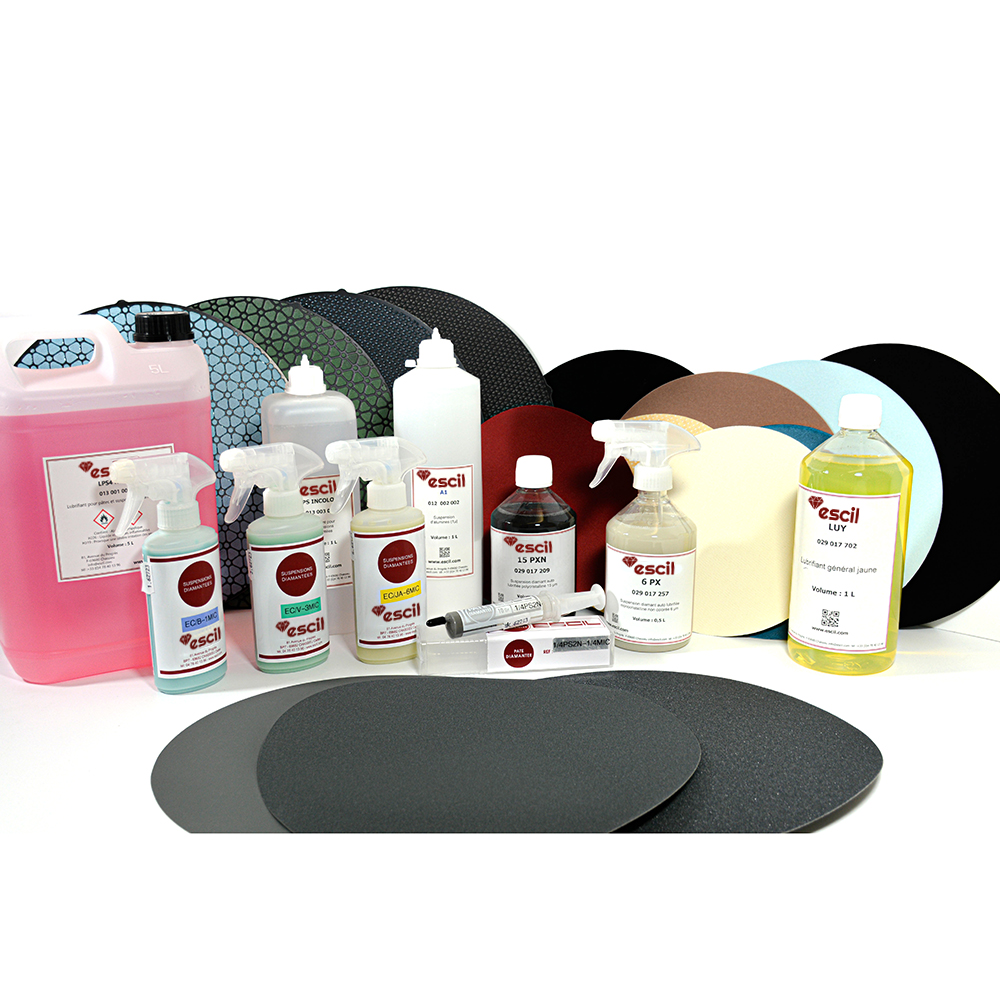Polishing is par excellence the main step of the micrographic preparation procedure. The objective is to finely polish the material by a mechanical process, or in some cases, by an electrolytic process, without causing structural deformations. The surface obtained must be free of defects that could lead to misinterpretation during the microscopic observation phase. The polishing process takes place in several stages:
- The roughing, the objective of which is to dress a flat reference face using fast, flat abrasives – The grinding is carried out by a series of abrasives with increasingly fine grain sizes.
- Polishing, carried out on fabric supports on which an abrasive diamond suspension is poured to obtain a mirror polish.
- A superfinishing step can be performed at the end of the polishing process when the material requires it.
- Depending on the material or/and the study to be carried out, it is often necessary to use an etching reagent to reveal the structures of the sample and thus complete the analysis.
The surface obtained from the sample after polishing must be flat, free of scratches, burns and contaminations. Our technical team will guide you in the choice of consumables to be used according to the material studied and the analysis to be performed. We have a pre-established preparation procedure that serves as an adaptable reference work base.




